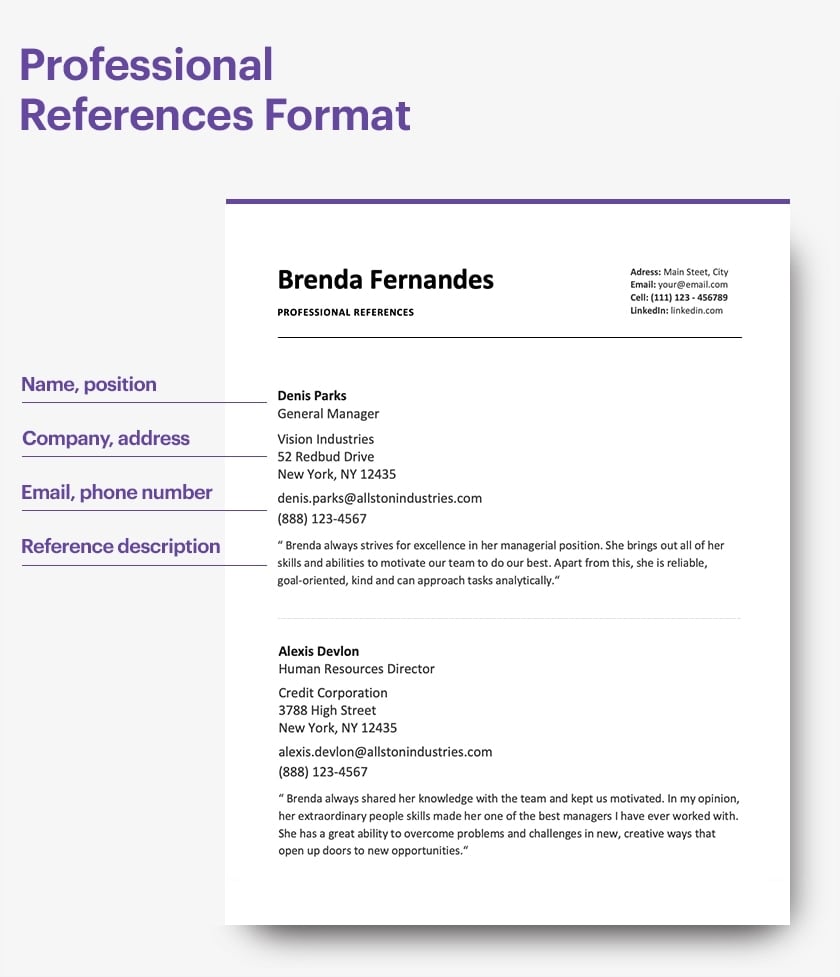Writing references on a resume is a task that often evokes anxiety among job seekers. While many know the importance of references, the process of effectively presenting them can remain elusive. A solid understanding of how to articulate this essential component is crucial. The significance of professional references extends far beyond mere names listed on a page; they serve as veritable endorsements of your capabilities, character, and work ethic, whimsically weaving a narrative that complements your qualifications.
The quandary faced by many candidates centers on when and how to include references in a job application. A common misconception is that references should always be included on the resume itself. However, this varies depending on industry standards and specific job requirements. Oftentimes, it is more prudent to provide references upon request rather than cluttering a concise document with additional listings.
Understanding the purpose of references is the foundation upon which a robust strategy is built. Professional references act as a bridge connecting you to prospective employers, providing a reliable source of validation for your claims. Employers often seek reassurance regarding a candidate’s social aptitude, reliability, and professional acumen. Thus, a well-chosen reference can significantly tip the scales in your favor during the decision-making process.
When considering which individuals to designate as references, it is vital to select those who can convey relevant experiences about your work and character. Ideal candidates include former supervisors, colleagues, professors, or clients who can speak knowledgeably about your contributions and professional demeanor. It is essential to refrain from choosing personal acquaintances or friends, as they may lack the objective insight that employers typically seek.
Having decided whom to approach, the next critical step involves reaching out to these potential references. This should be conducted with careful attention to etiquette; a polite request is in order, preferably through a direct conversation or personalized email. After explaining the context of your job search, it is crucial to inquire whether they feel comfortable endorsing you. This not only respects their autonomy but ensures that they will provide a positive recommendation should they agree.
Following their acquiescence, it is wise to provide your references with background information about the roles you are applying for. This may include your resume, a brief overview of the job description, and key attributes or accomplishments that you wish to have highlighted. This proactive measure enables your references to tailor their discussions around pertinent themes, thereby enhancing the credibility of their testimonial.
Once you have successfully gathered your references, it’s time to format them professionally. Generally, a separate document labeled “References” can be created. This allows your resume to retain its succinct nature while ensuring that your references are readily available when requested. The format typically includes the following elements:
- Name: Clearly present the full name of each reference.
- Title and Organization: List their current job title, as well as the company or organization they are affiliated with.
- Contact Information: Provide their phone number and email address, ensuring that you have their permission to share these details.
- Relationship: Describe your acquaintance, e.g., direct supervisor, colleague, etc. This context contextualizes their authority to comment on your professional skills.
As you assemble this information, adopt a clean and professional layout. Consistency in format is key; employing uniform fonts, sizes, and bullet points creates a visually cohesive document. This approach reflects your attention to detail, an attribute that many employers value.
Upon submitting your resume, it is advisable to send a quick follow-up note to your references. This simple act of keeping them informed not only reflects positively on your professional etiquette but also ensures that they are prepared in case they receive outreach from a potential employer.
While the focus here is on securing references, one must also remain cognizant of the importance of maintaining professional relationships actively. Engaging with former colleagues or supervisors through platforms like LinkedIn or industry events can help reinforce these connections. Regular communication fosters a sense of goodwill and may prompt references to think of you favorably when opportunities arise.
Enthusiasm is often a key factor that employers look for in candidates. Therefore, it is important that your references are not only knowledgeable about your skills but also genuinely supportive and enthusiastic about your candidacy. A lukewarm reference can do more harm than good. Take time to nurture your professional relationships, investing in dialogue that transcends transitional employment phases.
As your career progresses, periodically reassess your references. New achievements, promotions, or newly developed skills can warrant an updated lineup of recommenders. It may also be prudent to refresh your references after a significant gap since you last used them, ensuring that their perspective on your work is current.
In conclusion, writing references for a resume, properly curated and presented, can serve as a valuable enhancement to your job application strategy. Selecting the right individuals, maintaining those relationships, and presenting their support in a polished format reflects both professionalism and foresight. By attending to these components, job seekers can procure influential endorsements that resonate powerfully, potentially leading to a successful culmination of their job search. In a competitive job market, those who go the extra mile to secure robust professional references often reap significant dividends in their pursuit of career aspirations.




